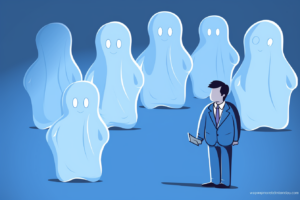A HR leader's guide to using talent assessments more strategically by Aon
- 4 Min Read
To learn more about how your organization can make the best use of assessments, please download Aon’s A Guide to Making Better People Decisions With Talent Assessment.
- Author: Aon
- Date published: Jan 10, 2024
- Categories

30-second summary
- The concept of the ‘workforce of the future’ is becoming increasingly important in the post-pandemic world, and companies need to be prepared for tomorrow today.
- Talent assessments, including psychometrics, are being used by more organizations to measure performance, promote diversity, equity, and inclusion, and to make informed talent management decisions.
- Assessments help organizations identify skills gaps, determine learning potential, and align individuals with roles that capitalize on their strengths, ultimately driving organizational success.
The term ‘workforce of the future’ is a favorite post-pandemic HR phrase that refers to a world of business that is just over the horizon. Is it really a few years away or just around the corner?
The last few years have reinforced the fact that companies need to be prepared for tomorrow, today. Businesses must ensure they have a future-ready workforce in place to take on potential challenges. How firms understand their workforce, its capabilities, potential, and its ability to evolve and adapt will matter more than ever before.
Talent assessments, including psychometrics, allow companies to do so at scale, reliably and continuously. Talent assessments enable fairer measuring of performance and, when used appropriately, can have a big impact on diversity, equity, and inclusion (DEI) targets by removing conscious or unconscious bias when evaluating a candidate or current employee.
While talent assessments have long been used to help make hiring decisions, more organizations are using them and in new ways. Aon has seen an 85% increase in the volume of assessments delivered for clients in the past four years, based on an analysis for Aon’s recent report, A Guide to Making Better People Decisions with Talent Assessments. Hiring the wrong people is painful, but an even bigger risk is hiring the right people and not being able to retain them as organizations prepare to be fit for the future.
“Talent assessments help make well-informed talent management decisions, including hiring the right candidates. But they also provide data and analysis for developing employee skills, identifying future skills and potential leaders,” explains Charlotte Schaller, partner and head of Aon Assessment Solutions, UK.
This data then helps organizations determine the hard and soft skills that are available — and perhaps underutilized — in the organization. “Not all the skills needed today will be the skills needed next year, nor the year after. So, assessing people’s learning mindset, potential and ability to be agile is key,” continues Schaller.
Employees who have more softer skills but show an aptitude for learning technical skills can be put into a reskilling or upskiller program. Using talent assessment data, can help the organization determine where skills gaps are and how many new roles need to be acquired from outside the firm.
As more assessments are being used for current employees, organizations can also better determine which employees need more coaching, career development, promotion opportunities and more.
“By gauging capabilities, HR professionals can align individuals with roles that capitalize on their strengths, promote job satisfaction, and drive organizational success,” says Schaller.
Using assessments to align talent strategy
Part of building a workforce of the future is making certain that all aspects of the people function — from compensation schemes to performance management — form a cohesive people strategy. That is another area where talent assessment can help.
We work with clients to administer and then use the data from talent assessment to solve today’s three core HR challenges:
- Enabling a talent strategy that supports business strategy.
- Designing the participant experience and driving diversity, equity, inclusion and a sense of belonging (DEI&B).
- Building resilience and assessing future workforce skills at scale.
“A well-structured talent assessment process helps identify candidates who are likely to thrive in the organization, leading to higher employee retention,” says Schaller. “For existing employees, assessments provide a wealth of data to determine the best way to engage and develop employees in their current and future roles.”
To learn more about how your organization can make the best use of assessments, please download Aon’s A Guide to Making Better People Decisions With Talent Assessment.
The information contained in this document is intended to assist readers and is for general guidance only and is not intended to provide advice to the reader.







